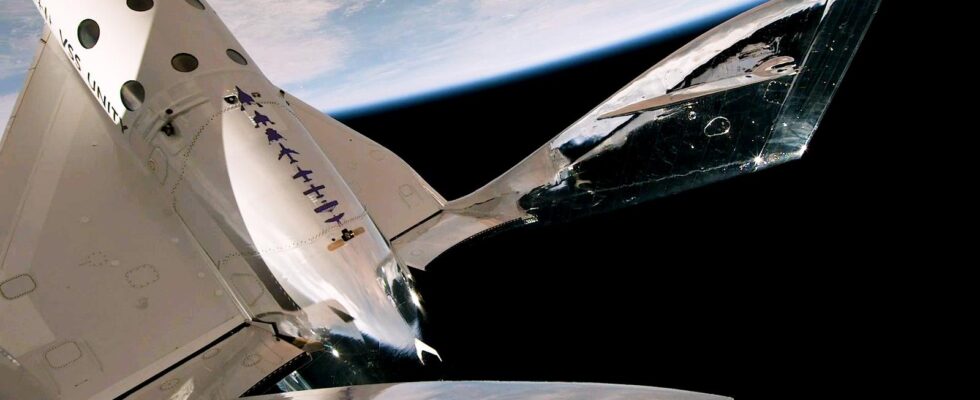Almost two years after the antics of the billionaire Richard Branson, the small rocket plane VSS Unity again climbed to more than 85 kilometers in altitude. This flight with four passengers, all employees of Virgin Galactic, prepares the long-awaited entry into commercial service of the aircraft.
It remains to be seen at what rate the plane will take off.
Parabola to last
Will the VSS Unity adventure finally take off? Two flights above 80 kilometers in altitude in 2019, then two years of absence… Two flights above 80 kilometers in altitude in 2021, then almost another two years of absence… The challenge in 2023 is therefore to succeed in regularly taking passengers to the frontier of space. Virgin Galactic claims in any case to be on the right track.
The carrier plane (the VMS Eve) is coming out of a period of overhaul and reinforcement, and the small rocket plane VSS Unity has also received some improvements to be able to fly at a higher rate. On May 25, the company wanted to test its entire “customer experience” with two pilots and four employees on board, for a flight from Spaceport America. Bet succeeded in any case on the technical side, with this new parabola.
Little road book
As with previous flights, the carrier aircraft took off from Spaceport America before picking up speed and altitude on a “circuit” over the New Mexico desert, until it reached 14 kilometers above sea level. altitude. This first stage lasted just over an hour, then the VSS Unity jettisoned and ignited its rocket engine for about a minute, first accelerating past Mach 1 and then lifting its nose up. vertical device.
The engine subsequently shut down at just over Mach 3, and the six occupants of the cabin can take advantage of weightlessness and the many portholes arranged on the walls of the aircraft. Finally, the two pilots remained at the controls to ensure the stability of the aircraft up to an altitude of 87.2 kilometers and to prepare for its return crossing using the pivoting tail system. VSS Unity then descends to land while hovering back to the very long runway from which it took off, in approximately 15 minutes.
Flight forecast
Virgin Galactic had placed experienced pilots on this flight (Michael Masucci and CJ Sturckow, with 3 suborbital dishes each), but also a special passenger, Beth Moses. Responsible for the “astronaut customer” program for the company, the latter was part of three of the five flights of the device to the frontier of space. Three other employees were learning about the experience (Luke Mays, Christopher Huie and Jamila Gilbert).
If the company keeps its promises this time, the plane could fly again next month (possibly early July) for a flight in the service of the Italian Space Agency (ASI) ordered for several years to fly a set of experiments in weightlessness. And finally, she will be able to start her commercial parables. If it does not raise funds quickly, Virgin Galactic may also have financial problems by the end of the year.
Source : SpaceNews

0